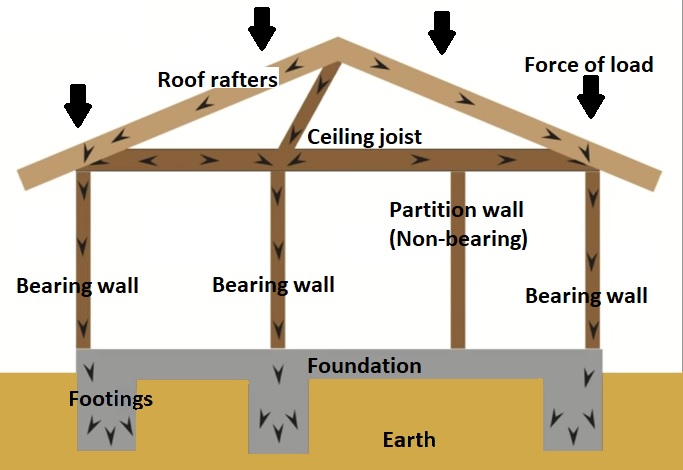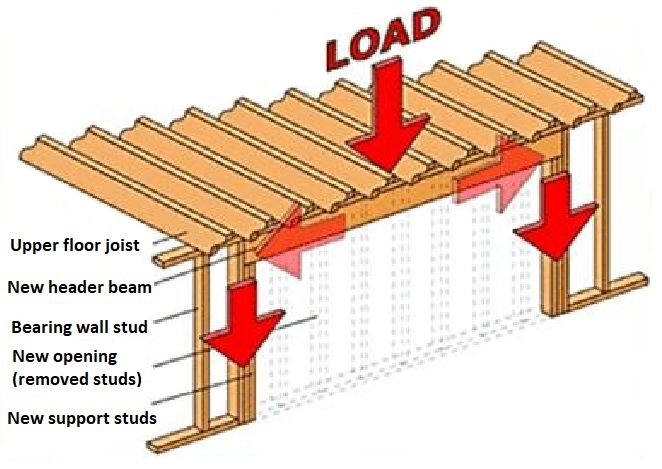A load-bearing wall, sometimes simply called a bearing wall, is a wall in a structure that is used to support or bear the weight of the structure that rest upon it. The supported weight is then conducted, or passed through, to the foundation upon which the load-bearing wall is sitting. Load-bearing walls may be constructed of many different materials. In residential and commercial construction, commonly used materials include wood, brick, block, concrete and steel. The size and strength of load-bearing walls is determined by the weight of the structure that it must support.

Determining which walls are load-bearing can be difficult, as most supporting members are hidden behind wall coverings, such as drywall or paneling, inside the structure. Exterior walls are almost always load-bearing. Interior walls that run perpendicular to floor and ceiling joist are typically load bearing. Walls that continue through multiple stories are also typically load bearing.

With proper replacement framing structures installed, most load-bearing walls can be removed or relocated.
It is recommended that a qualified, licensed contractor and/or structural engineer be consulted prior to attempting any renovations on a structure, particularly when load-bearing walls are involved.
